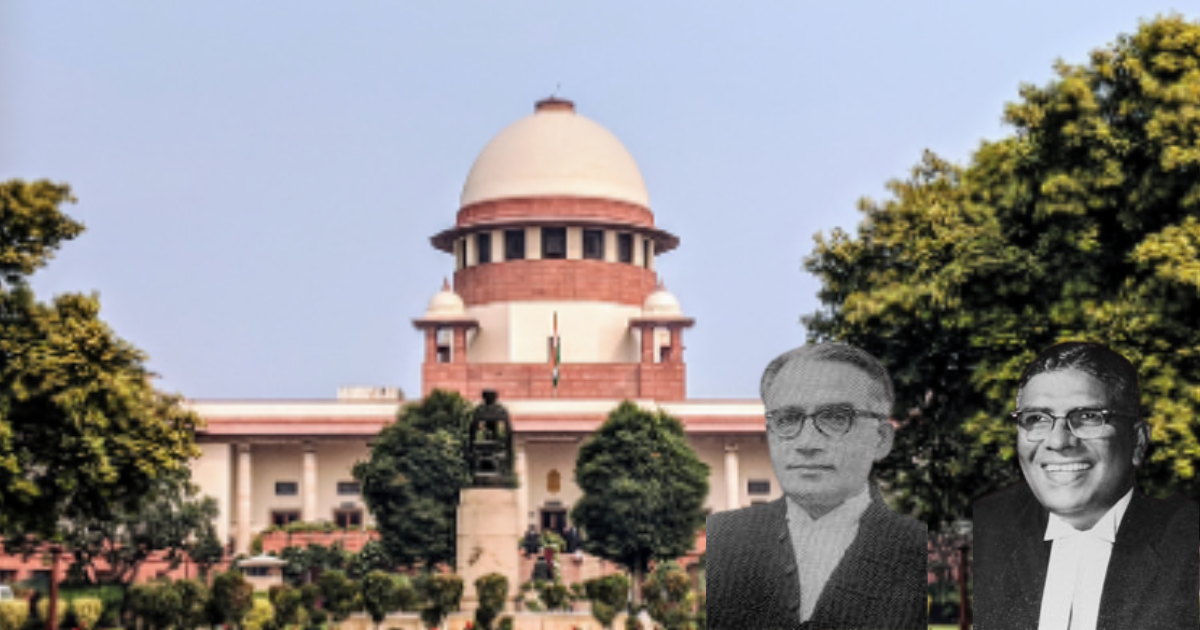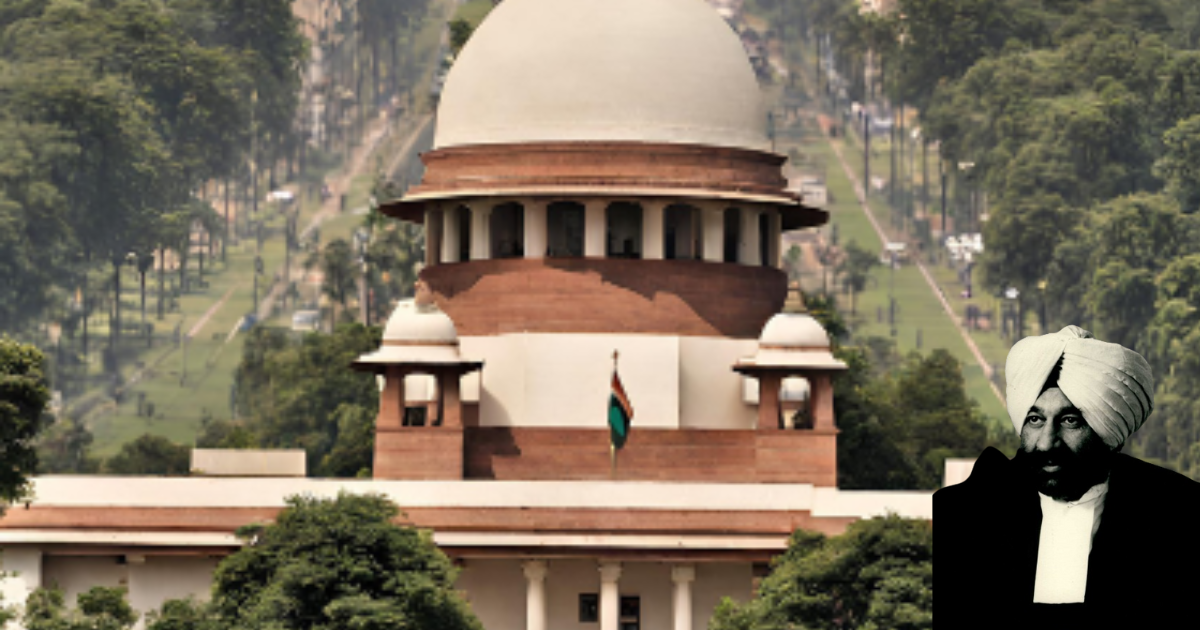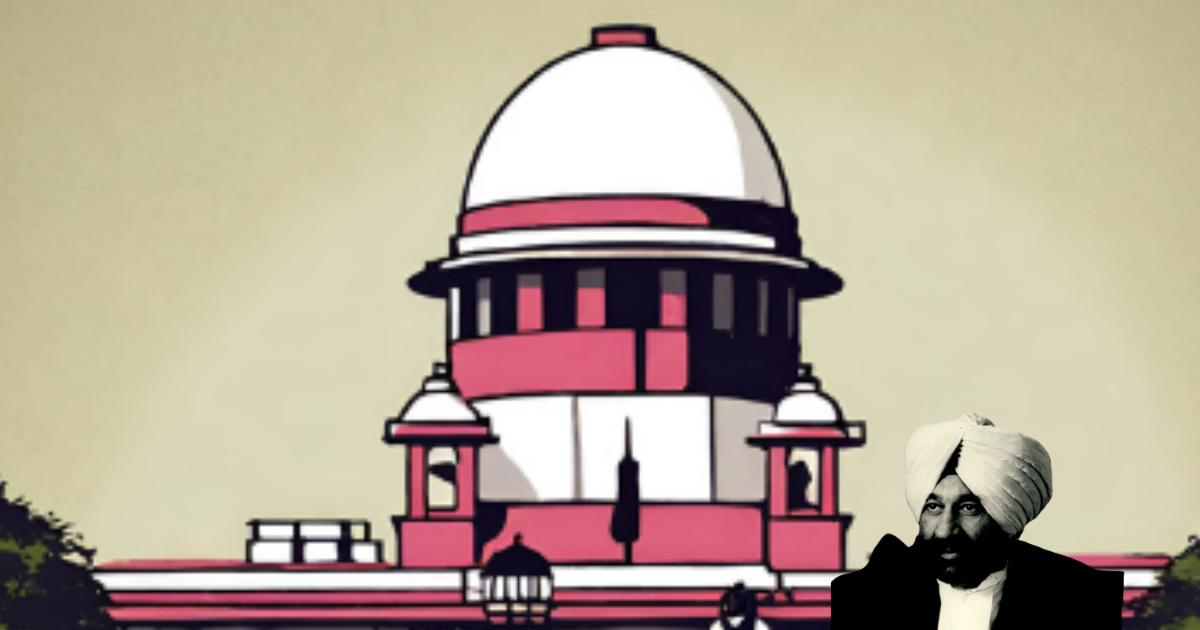The Kesavananda Bharati case, a landmark judgment delivered by the Supreme Court of India in 1973, played a pivotal role in shaping the constitutional landscape of the country. The case revolved around the constitutional validity of amendments to the Indian Constitution and introduced the groundbreaking concept of the “Basic Structure Doctrine. The primary issue in the case was whether there were any limitations on the Parliament’s power to amend the Constitution. The petitioners argued that the Constitution’s amending power, under Article 368, did not grant unlimited authority to alter its basic structure.
The concept of the “Basic Structure Doctrine” emerged as a critical aspect of the case. The petitioners contended that certain features of the Constitution, deemed as its basic structure, were immune from amendments. This doctrine aimed to safeguard the core values and principles that formed the foundation of the Indian Constitution. The case also raised questions about the extent of the judiciary’s power to review constitutional amendments. The petitioners argued that the judiciary had the responsibility to ensure that amendments did not violate the basic structure of the Constitution.
The Kesavananda Bharati case marked a crucial turning point in Indian constitutional law. By limiting the Parliament’s power to amend the Constitution, the Supreme Court sought to preserve the delicate balance between the three branches of government. The case affirmed the judiciary’s role as the guardian of fundamental rights. The Basic Structure Doctrine acted as a shield, ensuring that the core values enshrined in the Constitution remained intact and protected from arbitrary amendments. The judgment reinforced the independence of the judiciary by asserting its authority to review and strike down amendments inconsistent with the Constitution’s basic structure. This decision underscored the judiciary’s crucial role as the final arbiter in matters of constitutional interpretation. The Kesavananda Bharati case had far-reaching political implications. It curbed the tendency of the ruling party to wield unchecked power and provided a check against potential authoritarianism. The judgment affirmed that constitutional amendments could not be used to undermine the Constitution’s foundational principles.
The decision of the leading majority in the Golak Nath case that the then Article 368 of the Constitution merely prescribed the procedure for amendment of the Constitution and that the power of amendment had to be traced to Entry 97 of List I, Schedule VII read with Articles 245, 246 and 248 is not correct. The decision of the leading majority and of Hidayatullah J. that there is no distinction between an ordinary law and a law amending the Constitution is incorrect. Article 13(2) took in only ordinary laws, not amendments to the Constitution effected under Article 368. The decision of the leading majority and of Hidayatullah J. that Parliament had no power to amend the Constitution so as to abrogate or take away Fundamental Rights is incorrect. The power of amendment of the Constitution conferred by the then Article 368 was wide and unfettered. It reached every part and provision of the Constitution. Preamble is a part of the Constitution and is not outside the reach of the amending power under Article 368. There are no inherent limitations on the amending power in the sense that the Amending Body lacks the power to make amendments so as to damage or destroy the essential features or the fundamental principles of the Constitution. The 24th Amendment only declares the true legal position as it obtained before that Amendment and is valid. Section 2(a) and Section 2(b) of the 25th Amendment are valid. Though courts have no power to question a law described in Article 31(2) substituted by Section 2(a) of the Amendment Act, OP the ground that the amount fixed or determined for compulsory acquisition or requisition is not adequate or that the whole or any part of such amount is to be given otherwise than in cash, courts have the power to question such a law if (i) the amount fixed is illusory; or (ii) if the principles, if any are stated, for determining the amount are wholly irrelevant for fixation of the amount; or (iii) if the power of compulsory acquisition or requisition is exercised for a collateral purpose; or (iv) if the law of compulsory acquisition or requisition offends the principles of Constitution other than the one which is expressly excepted under Article 31(2B) introduced by Section 2(b) of the 25th Amendment Act – namely Article 19(1)(f); or (v) if the law is in the nature of a fraud on the Constitution. Section 3 of the 25th Amendment which introduced Article 31C into the Constitution is valid. In spite, however, of the purported conclusiveness of the declaration therein mentioned, the Court has the power and the jurisdiction to ascertain whether the law is for giving effect to the policy of the State towards securing the principles specified in Article 39(b) or (c). If there is no direct and reasonable nexus between such a law and the provisions of Article 39(b) or (c), the law will not, as stated in Article 31C, receive immunity from a challenge under Articles 14, 19 or 31. The 29th Amendment Act is valid. The two Kerala Acts mentioned therein, having been included in the Ninth Schedule, are entitled to the protection of Article 31B of the Constitution.I would direct each party to bear its own costs. 2253. As I am coming to the close of my judgment, drafts of judgments of several of my esteemed colleagues are trickling in. As I look at them, I hear a faint whiser of Lord Dunedin. And then I thought : I began this judgment by saying that I wanted to avoid writing a separate judgment of my own. Are first thoughts best?
The Constitution Bench will determine the validity of the Constitution (Twentysixth Amendment) Act, 1971 in accordance with law. The cases are remitted to the Constitution Bench for disposal in accordance with law. There will be no order as to costs incurred upto this stage.
Case Title: Kesavananda Bharati Sripadagalvaru and Ors Vs. State of Kerala and Anr
Case Number: Writ Petition (Civil) 135 of 1970



